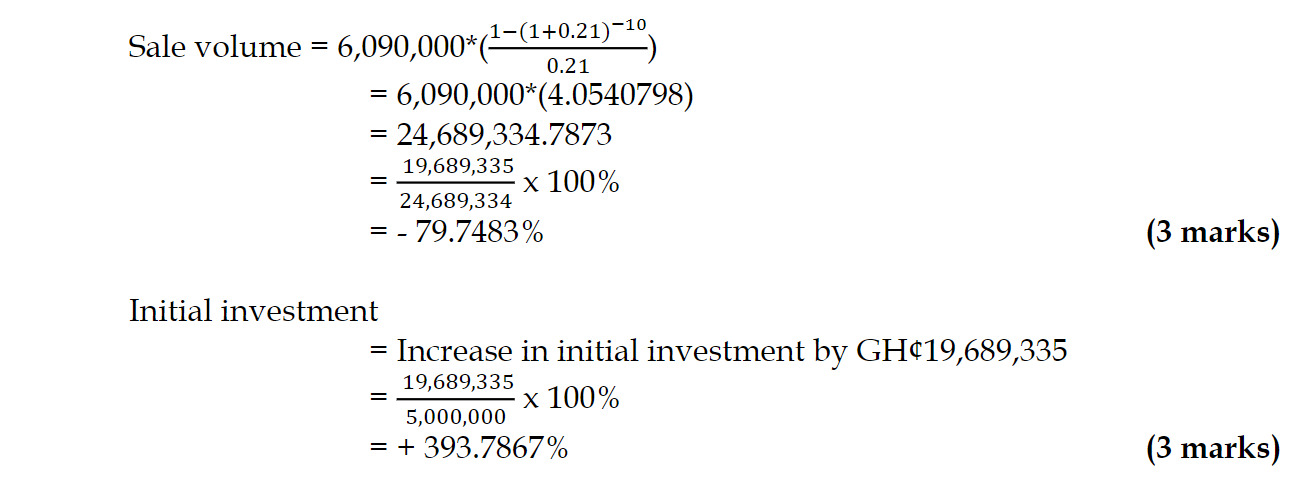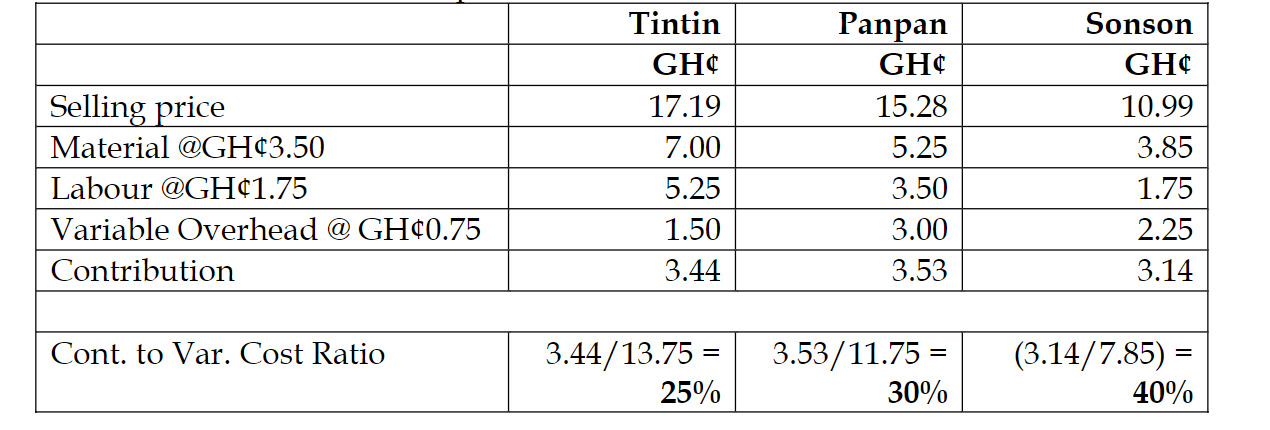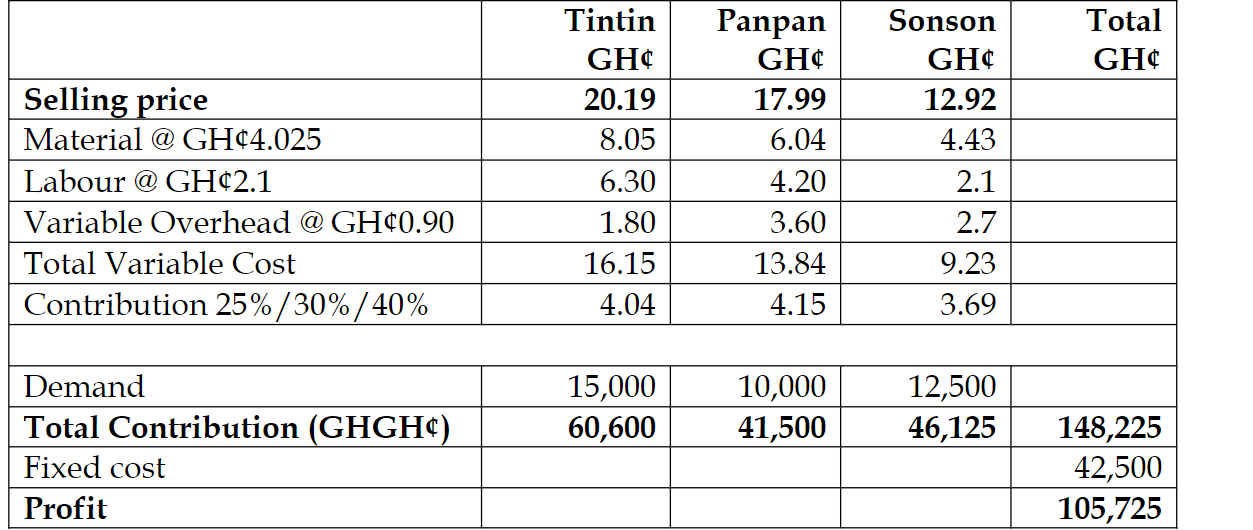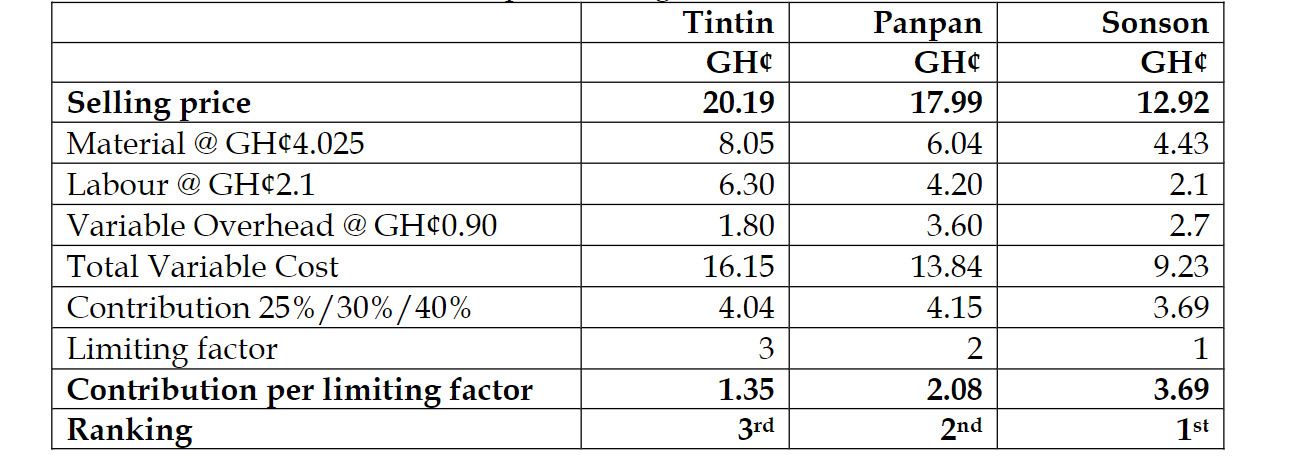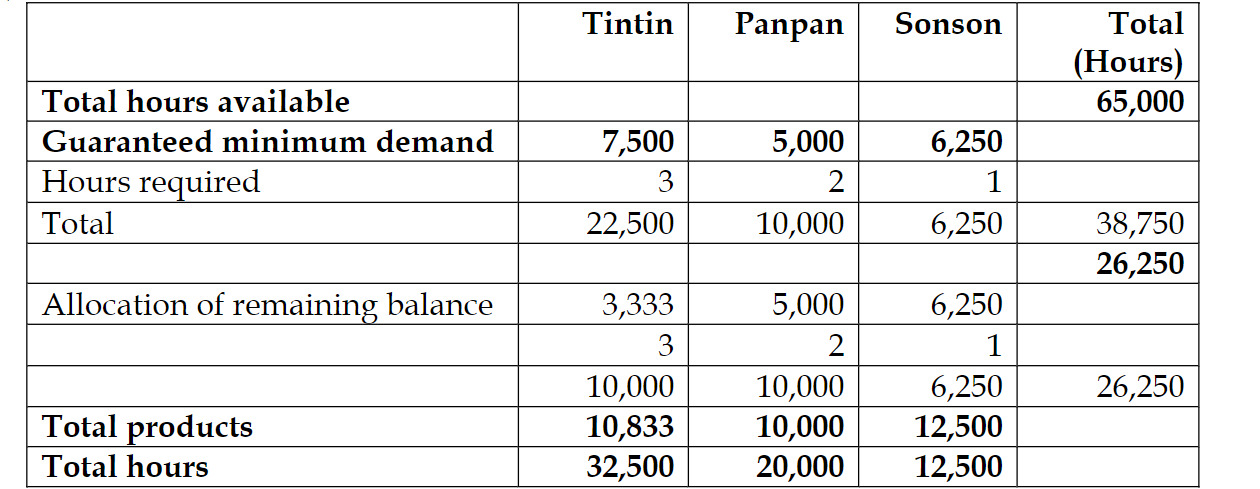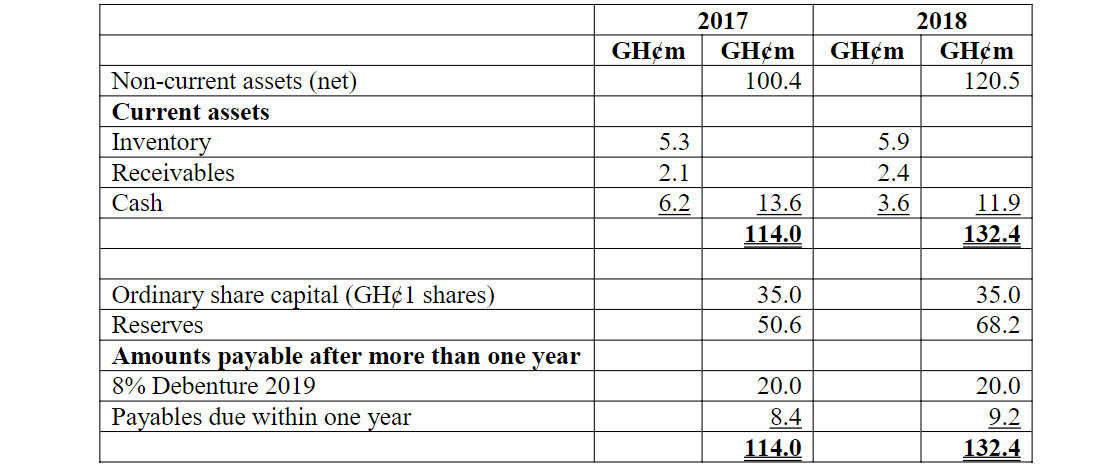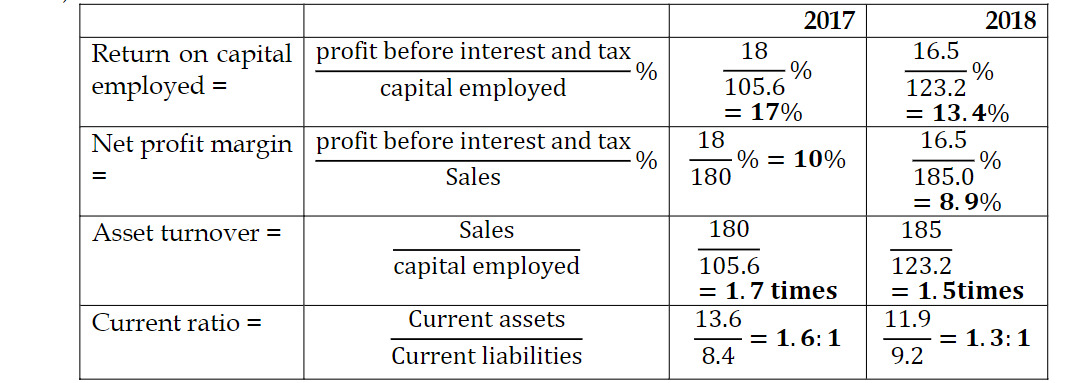- 20 Marks
Question
The Management Information System (MIS) division of KayCee Ltd provides consulting services to its clients as well as to other divisions within the group. Consultants always work in teams of two on every consulting day. Each consulting day is charged to external clients at GH¢750, which represents cost plus a 150% profit markup. The total cost per consulting day has been estimated to be 80% variable and 20% fixed.
The director of the Human Resources (HR) division of KayCee Ltd has requested the services of two teams of consultants from the MIS division on five days per week for a period of 48 weeks, and has suggested that she meets with the director of the MIS division in order to negotiate a transfer price. The director of the MIS division has responded by stating that he is aware of the limitations of using negotiated transfer prices and intends to charge the HR division GH¢750 per consulting day.
The MIS division always uses Internal video-conference equipment on all internal consultations which would reduce the variable costs by GH¢50 per consulting day.
Note: The conference equipment can only be used when providing internal consultations.
Required:
a) Calculate and discuss the transfer prices per consulting day at which the MIS division should provide consulting services to the HR division in order to ensure that the profit of KayCee Ltd is maximized in each of the following situations:
i) Every pair of consultants in the MIS division is 100% utilized during the required 48-week period in providing consulting services to external clients, i.e. there is no spare capacity.
ii) There is one team of consultants who, being free from other commitments, would be available to undertake the provision of services to the HR division during the required 48-week period. All other teams of consultants would be 100% utilized in providing consulting services to external clients.
iii) A major client has offered to pay the MIS division GH¢264,000 for the services of two teams of consultants during the required 48-week period.
(14 marks)
b) Explain THREE (3) limitations of negotiated transfer prices.
(6 marks)
Answer
a)
i) The transfer price of GH¢750 proposed by the MIS division is based on cost plus 150% from which it can be deduced that the total cost of a consulting day is (100/250) x GH¢750 = GH¢300. This comprises GH¢240 (80%) variable cost and GH¢60 (20%) fixed cost. In this instance, the transfer price should be set at marginal costs plus opportunity cost. It is assumed in this situation that transferring internally would result in the MIS division having a lost contribution of GH¢750 – GH¢240 = GH¢510 per consulting day. The marginal cost of the transfer of services to the HR division is GH¢190 (GH¢240 external variable costs less GH¢50 saving due to use of internal video-conferencing equipment). Adding the opportunity cost of GH¢510 gives a transfer price of GH¢700 per consulting day. This is equivalent to using the market price as a basis for transfer pricing where the transfer price is set at the external market price (GH¢750) less any costs avoided (GH¢50) by transferring internally.
ii) There is in effect no external market available for one of the required pairs of consultants within the MIS division and therefore opportunity cost will not apply and transfers should be made at the variable cost per consulting day of GH¢190. The other pair of consultants, who would otherwise be 100% utilized in providing consulting services to external clients, should be charged at a rate of GH¢700 per day which represents marginal cost plus opportunity cost.
iii) The lost contribution from the major client amounts to GH¢264,000/(2 x 240) = GH¢550 less variable costs of GH¢240 = GH¢310 per consulting day. Thus, in this instance, the transfer price should be the contribution foregone of GH¢310 plus internal variable costs of GH¢190, making a total of GH¢500 per consulting day.
Alternative
Cost Analysis:
Let X represent the cost
X + 1.5X = 750
2.5X = 750
X = 300
Variable cost = 80% of 300 = GH¢240
Fixed cost = 20% of 300 = GH¢60
i) Where there is no spare capacity, transfer price should be at market price. With the use of internal facilities and savings in variable cost, transfer price should be market price less savings, i.e., GH¢750 – GH¢50 = GH¢700.
ii) Where one team is idle, the fully engaged team will transfer at adjusted market price while the idle team will transfer at adjusted variable cost.
Fully engaged: GH¢750 – GH¢50 = GH¢700
Idle: GH¢240 – GH¢50 = GH¢190
Total = GH¢890
For the two teams:
iii) Where there is an offer from an outside customer, the transfer price should be the opportunity cost.
Offer price = GH¢264,000 / 480 hours = GH¢550, adjusted by savings of GH¢50, giving GH¢500 per consulting day.
Marks Allocation for Part a:
Analysis = 4 marks
i) = 3 marks
ii) = 3 marks
iii) = 4 marks
Total for part a = 14 marks
b) Limitations of negotiated transfer prices:
Suboptimal pricing: The transfer price which is the final outcome of negotiations may not be close to the transfer price that would be optimal for the organization as a whole since it can be dependent on the negotiating skills and bargaining powers of individual managers.
(2 marks)
Potential conflict: They can lead to conflict between divisions, which may necessitate the intervention of top management to mediate. The measure of divisional profitability can be dependent on the negotiating skills of managers who may have unequal bargaining power.
(2 marks)
Time-consuming process: They can be time-consuming for the managers involved, particularly where large numbers of transactions are involved.
(2 marks)
- Topic: Transfer Pricing
- Series: NOV 2023
- Uploader: Bonk

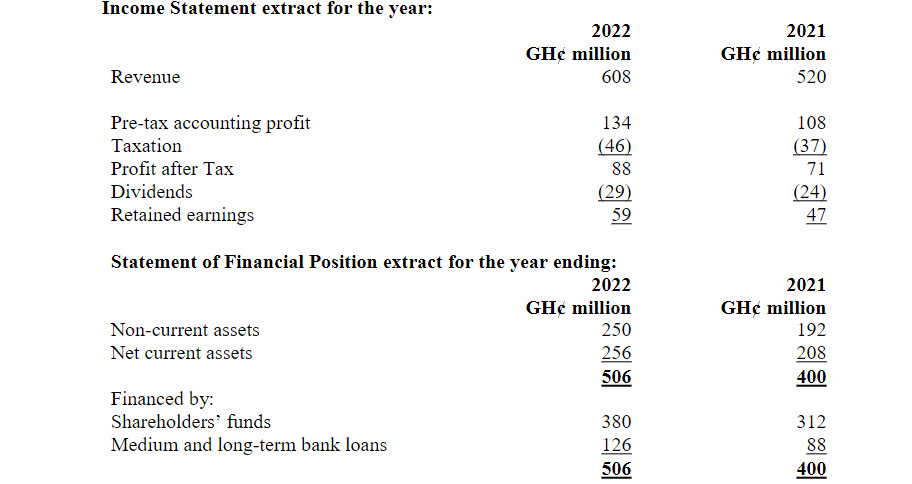






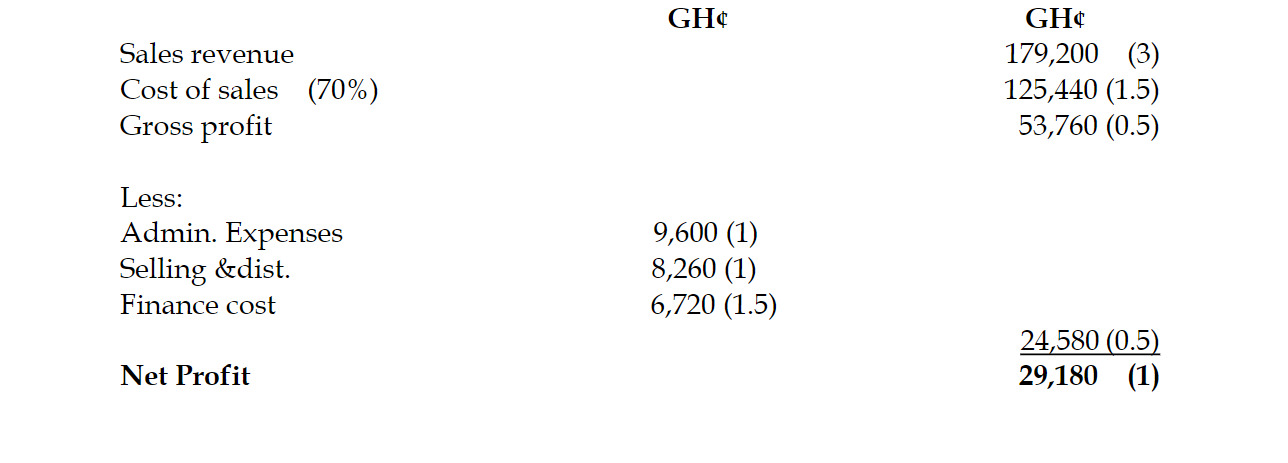
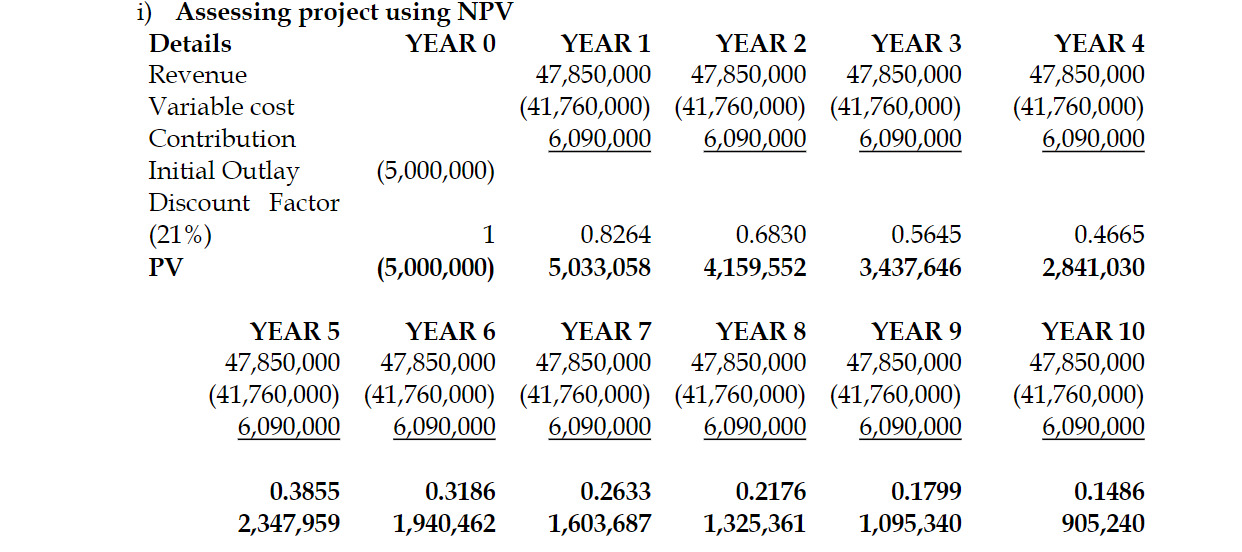

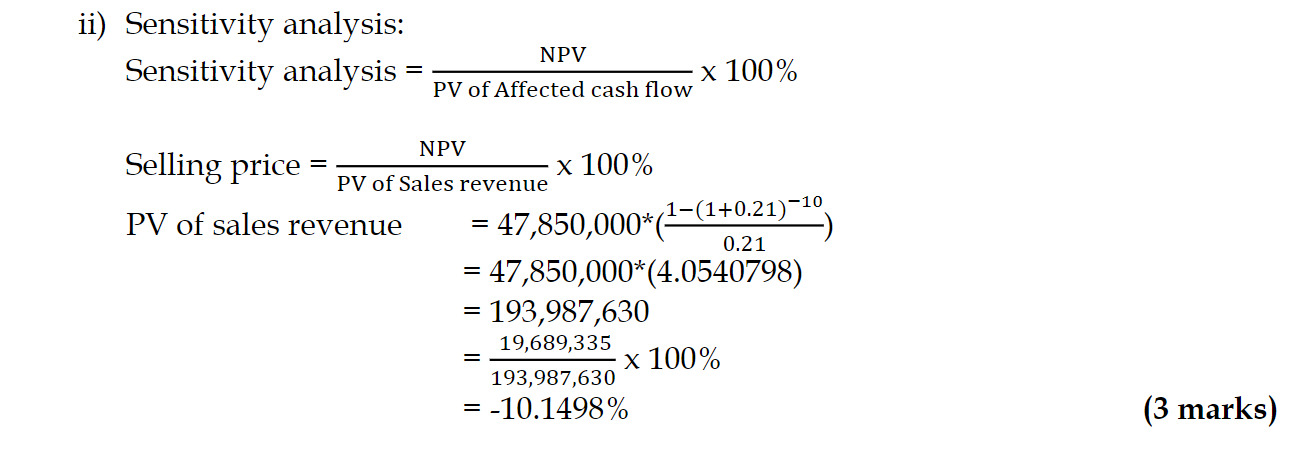

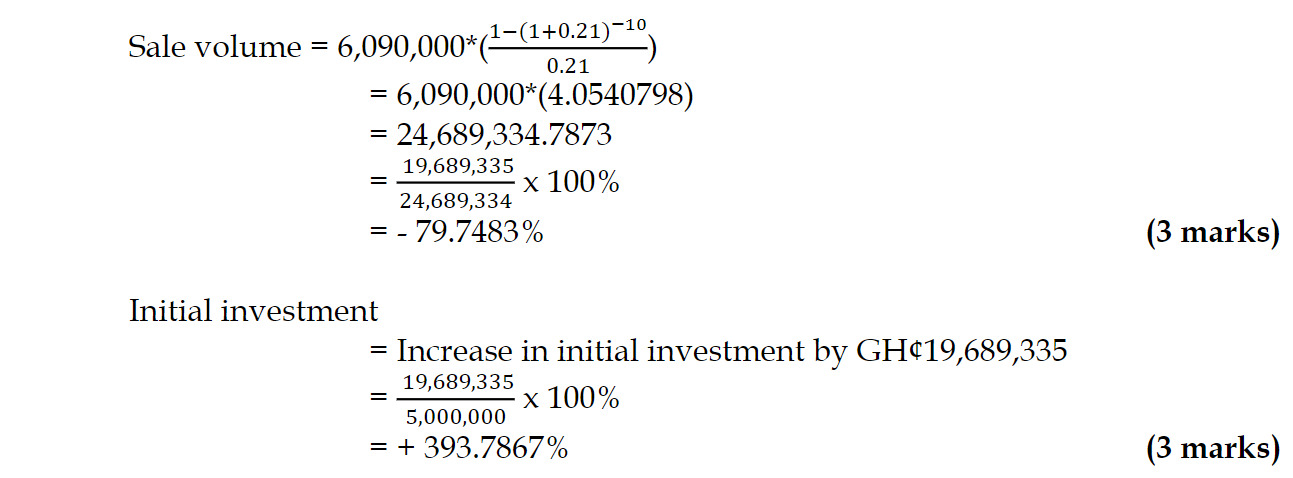
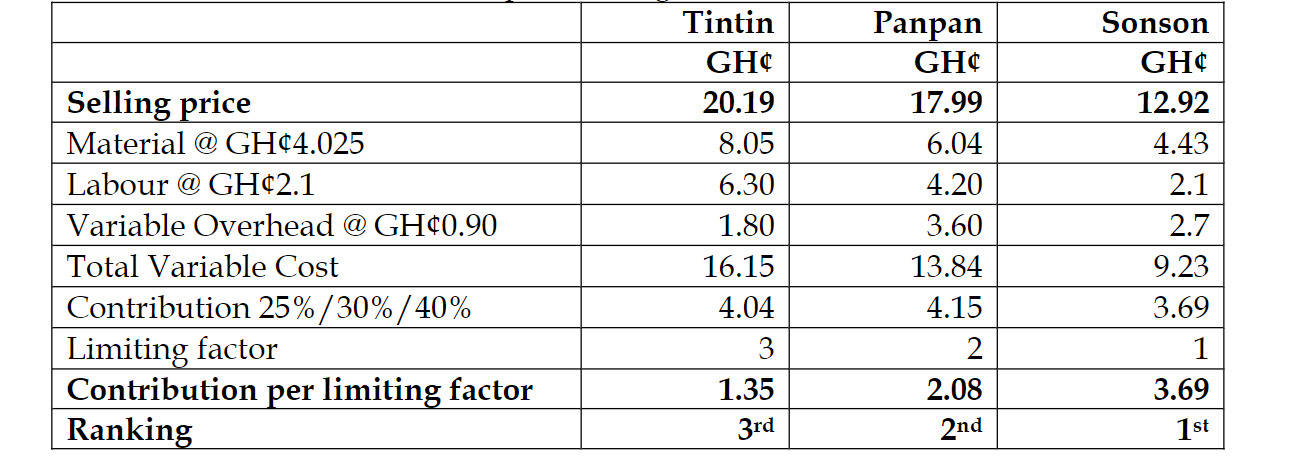 The following data relates to the planned activity of three products of Parlour Plc:
The following data relates to the planned activity of three products of Parlour Plc: